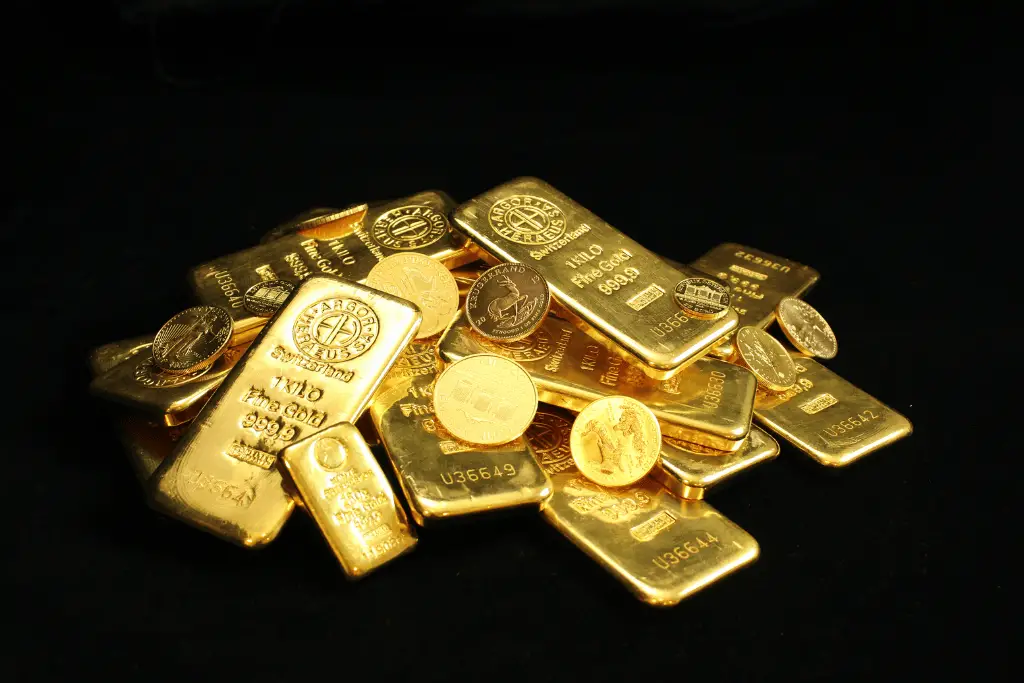
The Dynamics of Gold: Understanding Market Forces
In the ever-shifting landscape of financial markets, gold has maintained its allure as a timeless and valuable asset. Deciding when to sell gold is a strategic choice influenced by a myriad of factors. In this exploration, we’ll navigate the complexities of the gold market, delving into the economic forces, global events, and individual considerations that shape the optimal timing for selling this precious metal.
Gold as a Financial Compass: when is the best time to sell gold
Gold has been a symbol of wealth and stability throughout history. Its unique properties make it a sought-after investment, acting as a hedge against inflation and currency fluctuations. Understanding the dynamics of gold requires an exploration of the intricate dance between supply and demand, economic indicators, and geopolitical events.
Economic Indicators and Gold Prices:

The price of gold is intricately linked to economic indicators. During periods of economic uncertainty or inflation, gold often experiences increased demand as investors seek a safe haven. Conversely, in times of economic stability, when interest rates are higher, the opportunity cost of holding non-interest-bearing assets like gold rises, potentially leading to a decrease in demand.
Interest Rates and Inflation:
Central to this relationship is the influence of interest rates and inflation. When interest rates are low, the opportunity cost of holding gold diminishes, making it more attractive. Additionally, during times of inflation, gold’s role as a store of value becomes particularly pronounced, contributing to heightened demand.
Global Events and Market Sentiment:
Beyond economic indicators, global events and market sentiment play a pivotal role in shaping the gold market. Geopolitical tensions, economic crises, and unforeseen events can trigger shifts in investor sentiment, driving them towards or away from gold.
Geopolitical Tensions:
Historically, geopolitical tensions and uncertainties have led to increased demand for gold. The metal is perceived as a “safe haven” asset during times of political instability, offering a refuge for investors seeking to protect their wealth from unpredictable events.
Individual Considerations:
While understanding broader economic and global factors is crucial, individual considerations also come into play when determining the best time to sell gold. Each investor’s financial goals, risk tolerance, and time horizon influence their decision-making process.
Investment Goals and Risk Tolerance:
For investors with a longer-term perspective and a desire for wealth preservation, holding onto gold during periods of economic uncertainty might align with their goals. On the other hand, those with shorter investment horizons or a need for liquidity might find strategic opportunities to sell during market peaks.
Reading the Gold Market: Historical Trends and Patterns:
Examining historical trends and patterns in the gold market can provide valuable insights. Certain seasons or recurring events may influence gold prices, allowing investors to identify potential patterns that could guide their selling decisions.
Seasonal Trends:
Historically, gold has shown some seasonal patterns. For example, the demand for gold tends to rise during festive seasons, particularly in regions where gold is culturally significant. Understanding these patterns can help investors anticipate potential opportunities for selling.
Market Timing: Balancing Patience and Opportunism:

In the realm of selling gold, timing is indeed everything. However, the delicate balance lies in striking the right chord between patience and opportunism. While waiting for optimal market conditions is prudent, being attuned to potential opportunities and staying informed about market dynamics is equally crucial.
Patience as a Virtue:
In the world of investing, patience is often touted as a virtue. Holding onto gold through market fluctuations requires a steadfast belief in its long-term value and the conviction that economic cycles will eventually favor the precious metal.
Seizing Opportune Moments:
At the same time, recognizing opportune moments to sell requires a proactive stance. This could involve closely monitoring economic indicators, staying informed about global events, and being ready to adjust one’s investment strategy based on changing market dynamics.
Economic Indicators and the Gold Market Dance
In the intricate world of gold trading, economic indicators take center stage, orchestrating a nuanced dance that guides investors in deciding when to sell this precious metal. This part will dissect the influence of interest rates, inflation, and other financial metrics on the gold market, providing a deeper understanding of the economic forces that shape the optimal timing for selling gold.
Interest Rates: The Pendulum of Opportunity
Interest rates wield a significant influence on the dynamics of the gold market. The relationship between interest rates and gold prices is inversely proportional, creating a pendulum of opportunity for astute investors.
Low Interest Rates and Gold’s Allure:
During periods of low interest rates, the opportunity cost of holding non-interest-bearing assets like gold decreases. As a result, gold becomes more attractive to investors seeking to preserve capital in an environment where alternative investments may offer lower returns.
High Interest Rates and the Pull Away from Gold:
Conversely, when interest rates rise, the appeal of gold diminishes. The increased opportunity cost of holding an asset that doesn’t yield interest can lead investors to shift their focus to interest-bearing investments, creating downward pressure on gold prices.
Inflation: Gold as an Inflation Hedge

Gold’s historical role as an inflation hedge makes it a strategic asset during periods of rising prices. As inflation erodes the purchasing power of currencies, investors often turn to gold as a store of value.
Inflation and Increased Gold Demand:
When inflation is on the rise, the demand for gold tends to increase. Investors view gold as a tangible asset that can retain its value in the face of currency depreciation. This perception fuels heightened demand, contributing to upward movements in gold prices.
Deflationary Pressures and Gold’s Resilience:
While gold is often celebrated as an inflation hedge, it also exhibits resilience during deflationary pressures. The precious metal’s intrinsic value and scarcity can attract investors seeking a safe haven when economic conditions point towards deflation.
Unemployment Rates and Economic Stability:
Unemployment rates and overall economic stability play integral roles in shaping investor sentiment and, consequently, gold prices.
Unemployment and Safe Haven Appeal:
Elevated unemployment rates can create economic uncertainty, prompting investors to seek safe haven assets like gold. The metal’s perceived stability and store of value characteristics become particularly appealing during times of economic distress.
Economic Stability and Shifts in Demand:
Conversely, periods of economic stability may see shifts in demand away from safe-haven assets. When confidence in the economy is high, investors might explore more risk-oriented investments, potentially leading to decreased demand for gold.
Dollar Strength and Gold’s Inverse Relationship:

The strength of the U.S. dollar holds a significant sway over gold prices, establishing an inverse relationship that investors closely monitor.
Strong Dollar and Lower Gold Prices:
A strong U.S. dollar typically correlates with lower gold prices. When the dollar is robust, gold becomes more expensive for investors using other currencies, potentially suppressing global demand and influencing gold prices downward.
Weak Dollar and Enhanced Gold Appeal:
Conversely, a weakening U.S. dollar tends to enhance the appeal of gold. As the dollar loses strength, gold becomes more accessible to investors in other currencies, fostering increased demand and upward pressure on prices.
Global Events and Market Sentiment:
While economic indicators provide a structured framework for understanding the gold market, global events and market sentiment inject an element of unpredictability.
Geopolitical Tensions and Safe-Haven Surge:
Geopolitical tensions, such as conflicts or trade disputes, can trigger a surge in demand for safe-haven assets, including gold. Investors flock to the precious metal as a protective measure against uncertainty, driving prices upward.
Market Sentiment and Speculative Movements:
The psychological aspect of market sentiment can lead to speculative movements in gold prices. Positive sentiment might encourage speculative buying, while negative sentiment can prompt selling, even in the absence of fundamental economic changes.
Global Events and Individual Considerations in Gold Trading
As we unravel the complexities of determining the best time to sell gold, we turn our attention to the impact of global events and individual considerations. In this part, we’ll explore how geopolitical developments, economic shifts on the global stage, and the unique factors influencing individual investors contribute to the intricate dance of the gold market.
Geopolitical Developments: The Ripple Effect on Gold Prices
Geopolitical events exert a profound influence on the gold market, often serving as catalysts for significant price movements.
Trade Tensions and Flight to Safety:
Trade tensions between major economies can trigger a flight to safety, with investors seeking refuge in assets like gold. Heightened geopolitical risks elevate gold’s appeal as a store of value, driving up demand and prices.
Political Unrest and Market Uncertainty:
Instances of political unrest or instability can inject uncertainty into financial markets. In such times, gold emerges as a safe haven, shielding investors from the unpredictable consequences of geopolitical upheaval.
Economic Shifts on the Global Stage: Balancing Acts and Market Responses
Broader economic shifts, such as changes in global economic growth and trade dynamics, contribute to the intricate tapestry of the gold market.
Global Economic Slowdown and Gold’s Safe Haven Status:
During periods of global economic slowdown, gold’s safe haven status becomes especially pronounced. Investors turn to the precious metal as a form of insurance against economic uncertainties, bolstering demand and influencing prices.
Emerging Market Dynamics and Gold Demand:
The economic performance of emerging markets also plays a role in shaping gold demand. Increased prosperity in emerging economies can spur higher demand for gold, driven by both investment and consumer preferences.
Individual Considerations: Crafting a Personalized Gold Strategy

While global events set the stage, individual considerations add a layer of nuance to the decision of when to sell gold. Each investor’s goals, risk tolerance, and financial circumstances influence their approach.
Investment Goals and Time Horizons:
Understanding one’s investment goals and time horizon is pivotal. Investors with a long-term perspective may choose to weather short-term fluctuations, holding onto gold during economic uncertainties. Conversely, those with shorter time horizons might opt to capitalize on strategic selling opportunities.
Portfolio Diversification and Risk Mitigation:
Gold often serves as a tool for portfolio diversification and risk mitigation. Investors seeking to balance their portfolios may strategically sell gold during market upswings to reallocate assets or reduce exposure to precious metals.
Emotional Factors and Investor Behavior:
Emotional factors can sway investor behavior, impacting the timing of gold sales.
Fear and FOMO:
Fear of missing out (FOMO) during a gold price surge or fear of potential losses during a downturn can prompt impulsive decisions. Investors must guard against emotional reactions and approach gold trading with a disciplined mindset.
Market Sentiment and Contrarian Strategies:
Contrarian strategies involve going against prevailing market sentiment. Some investors may choose to sell gold when sentiment is excessively bullish, anticipating a correction, or buy when sentiment is overly bearish, expecting a rebound.
Technological Advancements and Market Access:
In the digital age, technological advancements have democratized access to the gold market.
Online Trading Platforms and Accessibility:
Online trading platforms provide investors with real-time market information and the ability to execute trades swiftly. This accessibility empowers investors to make informed decisions and respond to market developments promptly.
Navigating Information Overload:
Amidst the wealth of information available, investors must sift through data judiciously. While staying informed is crucial, navigating information overload requires a discerning approach to filter out noise and focus on key indicators.
Navigating the Currents: Decoding the Best Time to Sell Gold
As we journey through the intricate landscape of gold trading, the amalgamation of economic indicators, global events, and individual considerations becomes the compass guiding investors towards the optimal time to sell gold. In this final exploration, we’ll synthesize the threads we’ve unraveled, providing actionable insights for investors seeking to navigate the currents of the gold market.
The Intersection of Economic Forces: A Balancing Act
Understanding the interplay of economic forces is fundamental to determining the best time to sell gold. The inverse relationship between interest rates and gold prices, the metal’s role as an inflation hedge, and its responsiveness to shifts in global economic dynamics collectively create a dynamic framework.
Strategic Considerations:
Investors must consider the broader economic landscape when deciding to sell gold. During periods of economic uncertainty or inflationary pressures, holding onto gold as a safe-haven asset may align with long-term wealth preservation goals. Conversely, in times of economic stability, evaluating strategic selling opportunities based on interest rate movements becomes paramount.
Geopolitical Events: Navigating Uncertainty
Geopolitical events cast ripples across financial markets, influencing investor sentiment and gold prices. Trade tensions, political unrest, and global economic shifts underscore the intricate relationship between geopolitical developments and gold’s safe-haven appeal.
Strategic Response:
Investors navigating the gold market must stay attuned to geopolitical developments. While these events can create short-term volatility, a strategic response involves assessing the long-term impact on global economic stability. Selling gold during periods of heightened uncertainty and reinvesting strategically may align with risk management objectives.
Individual Considerations: Tailoring Strategies to Goals
The best time to sell gold is intimately tied to individual considerations. Investors must align their strategies with their investment goals, risk tolerance, and time horizons.
Customized Approaches:
Crafting a personalized gold strategy involves a thoughtful consideration of individual circumstances. Long-term investors may view market fluctuations as opportunities to accumulate gold, while those with shorter time horizons might adopt a more dynamic approach, selling during market peaks.
Emotional Factors: Mastering the Psychology of Trading
Emotional factors can significantly impact investment decisions. Fear, FOMO, and market sentiment play crucial roles in shaping investor behavior, introducing an additional layer of complexity to gold trading.
Discipline and Contrarian Thinking:
Maintaining discipline and adopting contrarian thinking can help investors overcome emotional hurdles. Strategic selling during periods of excessive bullish sentiment and buying during times of pessimism requires a disciplined approach to contrarian strategies.
Technological Advancements: Embracing Informed Decision-Making
In the digital era, technological advancements provide investors with unprecedented access to market information and trading platforms.
Informed Decision-Making:
While technology facilitates informed decision-making, investors must exercise discernment. Navigating the gold market’s complexities involves leveraging technology to stay informed while avoiding information overload.
Sailing the Seas of Gold Trading with Wisdom
The decision of when to sell gold is a nuanced journey, encompassing economic acumen, global awareness, and a deep understanding of individual objectives. Investors sailing the seas of gold trading must navigate the currents with wisdom, blending strategic considerations with a disciplined mindset. As we conclude our exploration, remember that the best time to sell gold is not a one-size-fits-all proposition. It’s a dynamic interplay of economic forces, global events, individual considerations, and the ability to master the psychology of trading. The seas may be unpredictable, but with knowledge, strategy, and resilience, investors can navigate the waves of gold trading and seize opportunities that align with their financial goals. May your journeys in the gold market be guided by wisdom, may your decisions be anchored in knowledge, and may the winds of fortune be ever in your favor. Happy trading!






